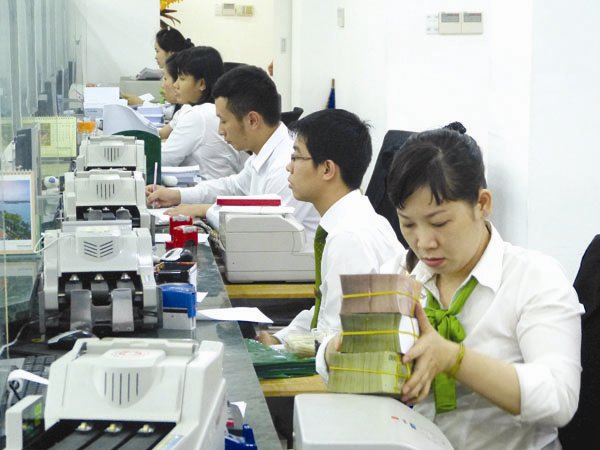|
State capital’s
representatives at banks – who are they?
Individuals who represent the state’s
capital at commercial banks are also officials working for state management
agencies. This practice is causing concern among those who believe it to
create unfair competition among banks.

Though the State has equitized most of its banks, it
continues to hold controlling stakes them. The state’s capital at the
institutions is managed by its representatives – in most cases, officials
from the State Bank of
In general, the State Bank dispatches more than one
official to each commercial bank. Each official is responsible for a certain
percentage of the state’s capital. This allows for dispersing risk, as power
is not concentrated in anyone individual, and allows those officials to
monitor each other.
The “power formula” the State Bank has been applying so
far is as follows: each chair of the board of directors of a bank supervises
30-40 percent of the funds, the CEO manages 30-40 percent, while a member of
the board, who concurrently is an officer of the State Bank, manages the
remaining stakes.
As an example, the President and CEO of Vietcombank,
the first state-owned bank to equitize, holds 30 percent of the capital.
Meanwhile, a member of the Board of Directors of the bank, who holds 40 percent
of the stakes, is now Director of the Banking Operation Safety Policies
Department of the State Bank.
At the equitized BIDV bank, President Tran Bac Ha
represents 40 percent of the State’s capital, while the CEO represents
another 30 percent. The remaining is managed by the Director of the State
Bank’s International Auditing Department.
At Vietinbank, after Pham Huy Hung, former President
retired, the state’s capital is now represented by three persons. Two of
them, holding 60 percent of stakes, are State Bank officials – Le Duc Tho,
who concurrently holds the post of State Bank Chief Secretariat, and Cat
Duong Quang, who is now the Deputy Director of the State Bank’s Credit
Department. The other 40 percent is assigned to Nguyen Van Thang, the former
CEO, who has just been appointed to the post of president.
The same apparatus structure can be seen at Mekong
Bank. The bank’s President Huynh Nam Dung holds 40 percent of the state’s
capital, while the other 60 percent has been divided among Nguyen Phuoc Hoa,
CEO, and Pham Huu Phuong, who is now the Chief Representative of the State
Bank’s Office in
A lawyer, citing current law, said that business owners
have the right to determine the number of their representatives in enterprises
and the volumes of shares the representatives manage. Current law also allows
the representatives to hold different posts concurrently.
Therefore, the lawyer said, bankers have every reason
to harbor concerns that such connections may create unfair competition
between the state-invested banks and other joint stock banks.
It is clear that the state-invested banks, having board
members and executives who also hold positions of influence in government,
can have great competitive advantages vis-à-vis other banks. That is
almost an inevitability, when the players on the field are also the policy
makers.
TBKTSG
|
Thứ Năm, 22 tháng 5, 2014
Đăng ký:
Đăng Nhận xét (Atom)
Không có nhận xét nào:
Đăng nhận xét